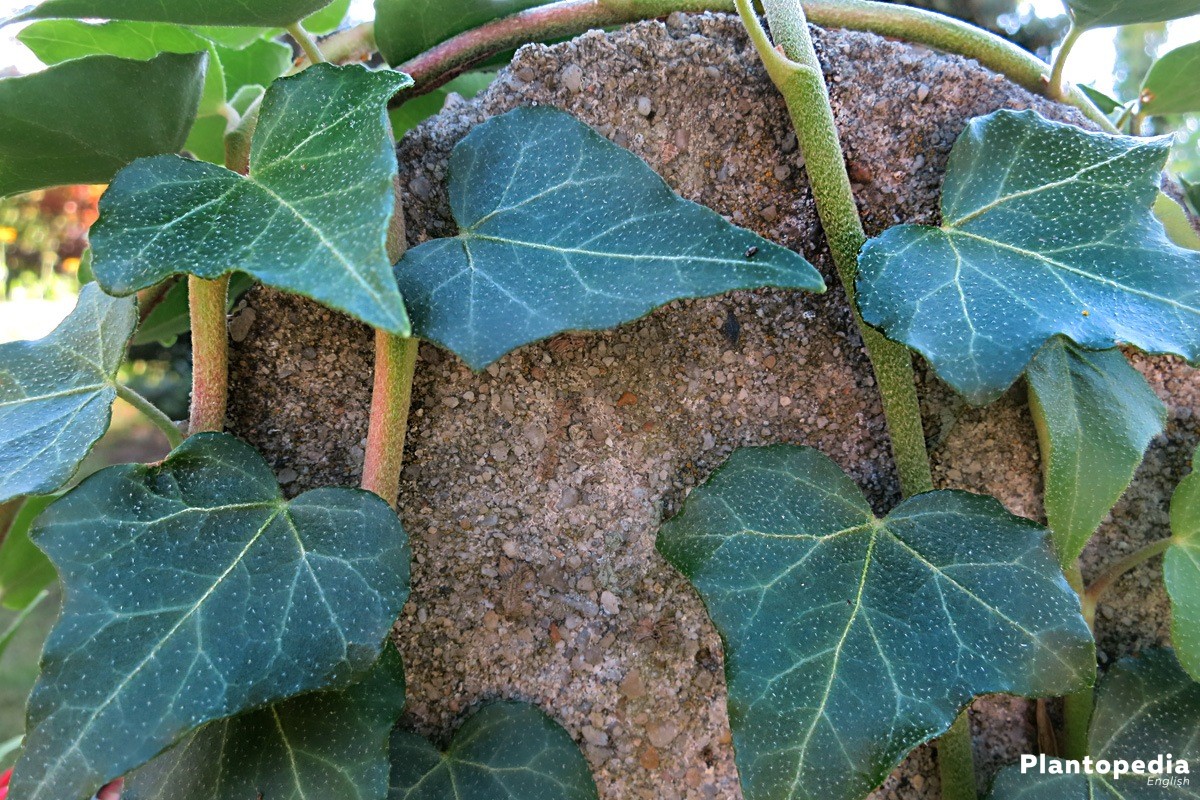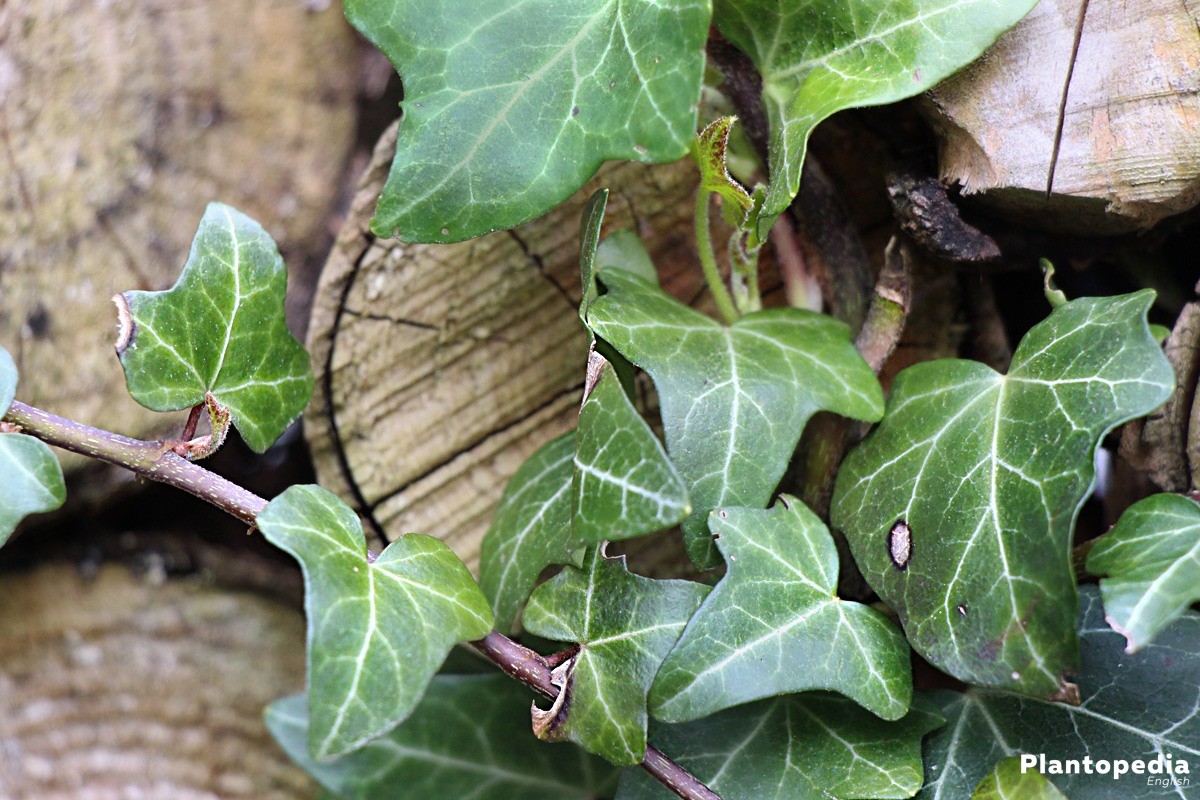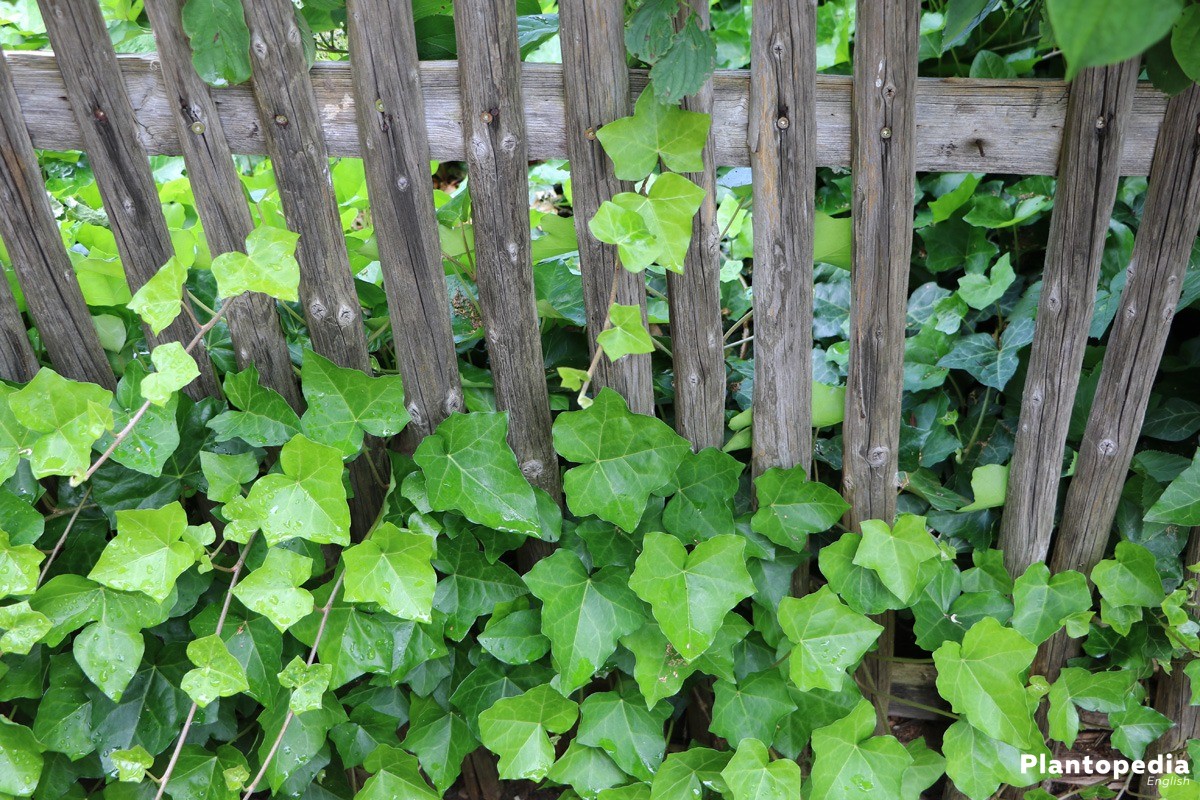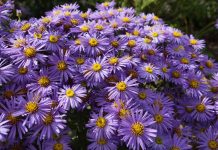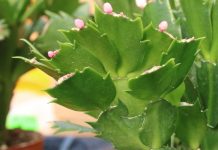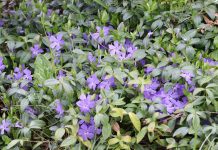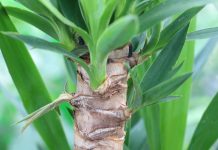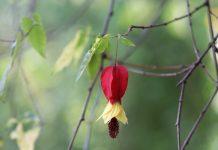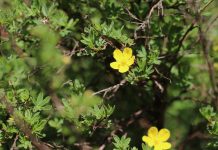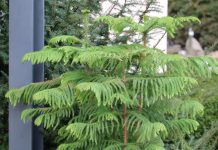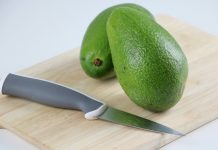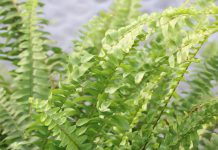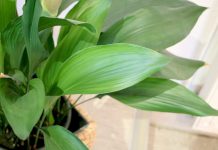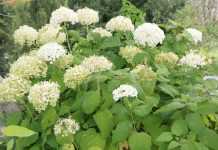Ivy (botanically: hedera helix) is a common sight in yards and parks. Anyways, the plant, which is a member of the aralia family, can also be held as an indoor plant. Since ivy prettifies your room throughout the entire year with its ever-green leafs, we would like to introduce you to ivy as a vine or hanging plant.
Plant Profile
Contents
- family: aralia family (araliaceae)
- genus: ivy (hedera)
- species: common ivy (hedera helix)
- trivial names: ivy, common ivy
- origin: Europe, Mediterranean areas
- ever-green, climbing decorative leaf-plant due to aerial rootlet
- height: depending on species 300 to 400 centimetres
- heyday: September to October
- multi-lobed leafs in crème to dark green respectively variegated
- frost-resistant and enduring plant
- toxic substances in all parts of the plant
Back in ancient Egypt, ivy was well-known and keenly anointed Osiris, the God of the sun. The old Greeks, too, knew the enduring plant and anointed it Dionysis, God of wine. Also, ivy is often seen on paintings of the previous century or on porcelain. It is categorized as a fast-growing and ever-green climber, a ground-cover plant with few standards to ground and habitat. Our tending guide describes in a detailed manner the claims and features of hedera helix.
Care
Perhaps it is due to is low-standard character that ivy grows outdoors just as well as indoors. Within around 400 species there are many that do very well indoors. Interestingly, even decorative ivy can live up to 100 years. Therefore it pays out to have a closer look at these room plants and to undertake them good care.
Location
As a friend of plants you place hedera helix at a rather cool spot. It is not quite fond of warmth. Therefore a sunny windowsill with a radiator is not the ideal spot. Regardless, it does love light, which is why a bright room with indirect sunlight irradiation is a great spot. Even in semi-shade it can develop wonderfully. A temperature of about 18 degrees Celsius with a rather high humidity is ideal. A bathroom is ideal for that purpose, in other rooms it should be damped from time to time.
Tip: Species with colorful leaves needs a brighter location than species with monochrome, dark green leaves.
Soil
As a low-standard plant, normal flower soil suffices the standards of ivy. To strengthen the plants, some horn chips can be added as a long term fertilizer. It is important that the soil is loose and doesn’t allow for waterlogging.
Seed and propagation
Ivy is bought as a plant or augmented with cuttings. Therefore continue reading in the section regarding increase.
Planting
Planting and repotting of ivy
The single ivy plant grows well on its own, but the pot takes on the desired bushy look if one plants more than one plant.
In that case one speaks of “ampelhaltung”. It is possible to cultivate hedera helix saggy or as a climber. This too should be considered beforehand. For climbing ivy, a bigger pot with space for two to five ivy plants and an additional growth support should be chosen.
Therefore it is important to:
- choose a pot and cachepot of sufficient size
- buy a growth support or build one from wire
Fill the pot with fresh flower soil and add some chipped horn to it. Then plant the plants and fill the pot up with soil once more. It is up to you to decide how many plants you deploy. For five plants make sure the pot is sufficiently spacious. If you want, deploy the growth support into the pot. If the plant is long enough, it can be wrapped around the growth support carefully. After the planting, pour the plants sufficiently and keep them moist.
Season of planting
The perfect season to repot is spring, alternatively autumn, too. The plant is much more comfortable, if the repotting is prior to the heating period. Spring offers the better conditions though, especially if the plants are rather large already and the roots peak out of the pot already. The new pot should be about two finger-widths larger than the old one.
Pouring
Just like a lot of other plants, ivy doesn’t like waterlogging. Make sure it is kept moist, but not too wet. Those who don’t have much experience in pouring plants and ofttimes drown their plants can add some sand or cobblestone to the soil. They improve the flow of the water. Expanded clay is also suitable, it takes in spare water that the plants can use in dry phases. Expanded clay can also be used as a water store for ivy.
Using the finger trial you can easily determine whether the plant needs pouring or not. If the surface is dry, the plant needs water. The conditions change due to the change of seasons and the humidity of the room.
- don’t use fresh tap water
- use rainwater or old tap water to pour
- remove spare water from the saucer
- during winter, pour less often but damp the plant from time to time
Cutting
Ivy as a house plant is very agreeable to cutting. Due to its great growth, the green plant can be cut at will. Thereby you control the long vines or the vegetation on the growth support and keep your house plant at the size you like.
This is how you cut it properly:
- the best time for the cutback is spring
- start by thinning out weak and withered branches
- then cut on the above of the leaf nodes that point to the outside
During the year, too, small correcting cuts are possible. Always cut with good sharp scissors to minimize the risk of an infection. If you desire a bushy growth for your young plants, cut off the shoot tips from time to time.
Tip: Wear gloves while cutting, even hedera helix contains toxic substances.
For the same reason, do not dump your clippings in places accessible by animals.
Increase
Increase through cuttings
At the cutback you receive a lot of cuttings that can be used for the increase.
For that purpose you need shoots of about six to eight centimeters length. Now several shoots are placed in a pot with pre-swollen turf. The shoots should be slightly damped and covered by a plastic bag. Hereby the main factor of increase is humidity. Success is indicated by growing roots and fresh shoots.
The perfect time is between February and October. Alternatively you can put the shoots into a glass of water for a couple of days and set into a pot with soil with cultivation conditions after the shootout of the roots.
Hibernation
Hibernation of hedera helix is not an issue as long as the pot is not placed near a radiator. Between 10 and 18 degrees Celsius it is visibly comfortable. Mind that the humidity is sufficient. For this reason damping the leaves regularly is almost more important than the (in any case reduced) pouring with chalk-free water. The soil remains moderately moist.
Fertilizing
To ensure the ivy develops splendidly, it is recommended to fertilize it from time to time. Since the soil, other than the soil outdoors, stops nourishing the plant after a while, fertilizing is recommended. Once again it becomes clear how low the standards of ivy actually are.
However, if you want a strong growth you should fertilize between March and September, either with a liquid fertilizer once in a fortnight or with a long time fertilizer which is worked into the soil.
Leaf ornamental plants prefer a nitrogen-based fertilizer, which should be added to the pouring water in a very low concentration.
Tip: Never add fertilizer to dry soil. It is better to fertilize after damping the soil.
From September on, fertilizing is not necessary anymore. The plants now slowly change into hibernation.
Vermins
Seldom spider mites find their way onto ivy. In that case bright dots appear on the surface of the leaf, the leaf starts getting brown and withers. On the bottom of the leaf you can recognize dozens of tiny mites.
If the ivy is placed close to a radiator it should immediately be removed. It is possible to give the ivy a shower or completely dip the vines. Hereby the bottom of the leaves must be fully wetted to remove the mites. If this is not successful, it is necessary to use a commonly available product.
Greenflys, too, are unpopular visitors. The vermits that come in the colour green, yellow, brown or black like to pitch onto the young shoots. In this case it is only sensible to pick the greenflys off by hand or to dip the plant into slightly soapy water. In case there are still greenflys on the leaves you can wipe them off with a cloth soaked with slightly soapy water.
The same goes for scale insects, which might cause the death of the plant. Here, too, tepid water and the removal of the vermins are the first measure. If this is not sufficient, commonly available products against greenflys are to be used.
Diseases
Due to ivy’s strong health there are no records of disease.
Species
Genus and species
Curly Variegated, curled hedera helix
An insiders’ tip from plant lovers is the curled hedera helix. It fascinates with a curled leaf-edge and gives room ivy a whole new look. The leafs are crème-green and very divergent to classic ivy. Curly variegated can measure up to 300 centimetresand does not stand frost.
Hedera helix goldheart
Another new eyecatcher is hedera helix goldheart. This species has leafs crested with golden colour and loves sunny locations, however without intense noon sun.
Hedera helix glacier
Green and white leafs, streaked with silver lines – that is hedera helix glacier. This species is the ideal room plant, especially if you are looking for a long ivy that is not branched too often.
Hedera helix harlekijn
Hedera helix harlekijn grows with colourfully patched leafs on a dark green base. This new breeding cultivates different forkings and measures up to 250-350 centimeters.
Hedera helix chicago
This species is the classic room ivy. It first came up in the sixties and has not lost popularity ever since. Decoratively heart – shaped lush green leaves with slightly rose stems bring variety to the room.
A sub-species, variegata, is lined with withe additionally. Hedera helix chicago is fitted for locations in shade or semi-shade.


